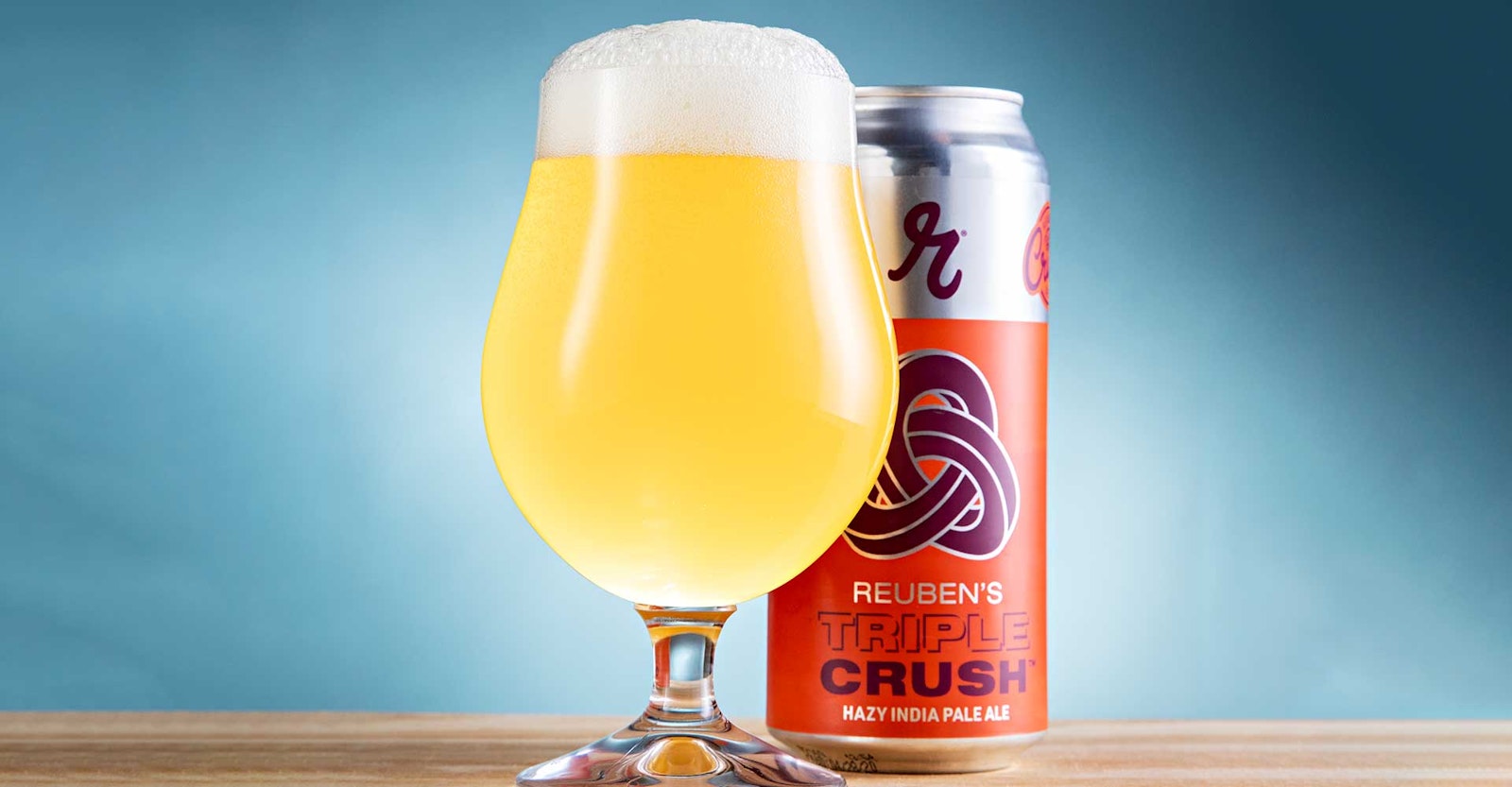Our most popular hazy IPA is no middleweight. Reuben’s Triple Crush is what we call a triple IPA, and it checks in at 10 percent ABV. It has won a number of awards, including gold at the U.S. Open in 2019 and 2018. Recent batches have sold out in less than an hour upon release.
As with all new beer recipes, there are always some key initial decisions you need to make to start off the recipe process. We first focus on what we consider the key concepts for that style—those choices that need to be made to drive the recipe formulation process.
Here are what we consider to be those key decisions you need to make to brew a full, smooth, aromatic, and flavorful hazy triple IPA.
Yeast Selection and Health
Often, key decision points driving success for recipe formulation aren’t obvious. For hazy IPAs, the first key decision point isn’t about hops—it’s about yeast. The ester profile, stable haze, and smooth mouthfeel all define hazy IPAs, and those really benefit from specific yeast strains. Our preferred choice is London III.
High-ABV beers stress your yeast immensely. You therefore need a very healthy and large-enough pitch, ideally fresh from being harvested off a starter or other lower-ABV beer. Yeast viability and vitality are key to having a clean and complete fermentation.
Drinkability
The next key decision for a triple IPA is based around terminal gravity. Your attenuation needs to get the beer to a drinkable finishing gravity—the beer can’t be overly sweet. Higher ABV adds body—with a higher terminal gravity—so drinkability for these styles can be difficult. To help achieve this, we mash low—148°F (64°C)—and add some corn sugar to bump up the ABV without increasing the body.
Hops
Notice that hops are third in the list of decisions for formulating a triple IPA. We believe that yeast selection, yeast health, and managing attenuation are the most important factors in a successful triple IPA. But hops are obviously fundamental, too. A bigger ABV provides a malt backbone that can handle more hop intensity because it has more sweetness to balance that out. This means that the sheer quantity of the dry hops can be a lot higher—in fact, it needs to be a lot higher to be able to stand out over the big malt body. We dry hop triple IPAs in the range of six-plus pounds per barrel.
At this large dry-hop level, hop burn is a real risk. We give our triple IPAs longer cold conditioning in the tank to help round out any hop bite.
As for hop selection, at this level of dry hop, almost any variety will have enough total oil to create a stable polyphenol haze. In terms of hop profile, this style is all about rich tropical fruit and soft, rounded hop character that melds with the soft mouthfeel and light bitterness. Make sure the varieties you select align with this overall character.
We should also discuss isomerization. From our lab testing, at these high levels of dry hopping, we need to assume that we get about 25 IBUs from the dry hopping alone. So, if we want a 50-IBU beer—which is our general target for this style—from the hot side we’re looking for only 25 IBUs. This severely limits your hot-side additions, and that may mean using lower whirlpool temperatures to minimize isomerization, if you’re looking to add a larger whirlpool addition. For Triple Crush, we get about half our bitterness by adding hops at flame-out, followed by a relatively short whirlpool.
By focusing on these three key areas when formulating a hazy triple IPA recipe, I believe you are setting yourself up for a great chance of success.

